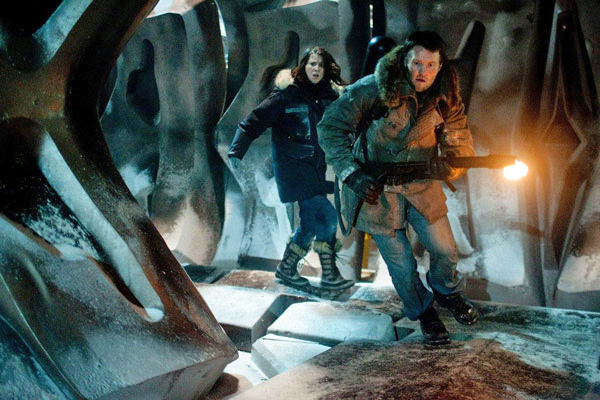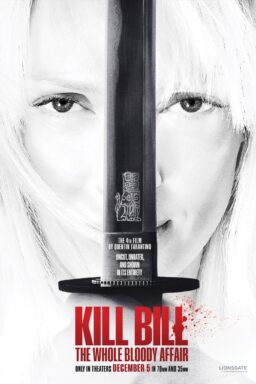Q. In the HBO movie “The Late Shift,” did anyone else notice the large number of instances when angry agents and network execs slammed the mouthpieces of their cell phones closed, akin to slamming down the receiver of a normal phone? And did anyone notice that when someone angrily slammed their shut cell phone, the person on the other end always looked shocked, staring at the phone as if hearing a dial tone? Folding the mouthpiece shut on a cell phone has absolutely no effect on a connection. (Mark Firmani, Seattle)
A. If anyone should know how to use a cellular phone, it’s an agent. And if anyone should know how to hang up, it’s a TV executive.
Q. In your review of “Nico Icon,” you referred to the famous Andy Warhol statement, “In the future, everyone will be famous for 15 minutes.” An art history professor taught me a different perspective on Andy Warhol’s prophecy, that I find more meaningful. The professor argued that what Warhol meant was not that every John Doe would have his 15 minutes, but that mankind’s collective attention span would become atrophied to the point that nothing would hold our interest for over 15 minutes, regardless of how famous or important that subject seemed. In my opinion, we are not far from there, as evidenced by the overabundance of neatly packaged TV shows that offer five-minute montages on the latest Hollywood soft news. Everything is important today. Something else will be important tomorrow, or right after these messages. What do you think? (Roberto Soltero, Guaynabo, P.R.)
A. Sorry, but your question is so long that I forgot how it began.
Q. Moviegoers often wonder about those odd titles for movie film crews, like the “Foley artist.” Now we all know what a foley artist does, but I am skeptical about the original of this title. Can you give me a definitive answer? One film encyclopedia reported it was named after Jack Foley, a purported movie pioneer, but provides no further info on the elusive Mr. Foley. (David L. Ressel, Los Angeles)
A. According to the editors of the Microsoft Cinemania CD-ROM disc, a foley artist is responsible for adding “routine sounds such as footsteps, moving furniture, and clinking silverware,” which are not always recorded during principal photography, when the emphasis is on spoken dialog. The technicians are named in honor of Ed Foley, a pioneering sound technician at Universal Pictures. Cinemania adds: “A particularly amusing demonstration of foley artistry can be found in Albert Brooks’ 1981 comedy “Modern Romance.”
Q. A small point. You referred to the power station used in “Richard III” as being the “Bankside Power Station” and noted its “single towering chimney.” Any Londoner knows this building as the Battersea Power Station–it has four chimneys and is visible for miles–and, until recently, was being redeveloped into a theme park. (Oliver Moor, North Lauderdale, Fla.)
A. Bankside Power Station has one central chimney. Battersea Power Station has four. It looked to me as if the power station in “Richard III” had one chimney.
Q. What’s the Oscar made out of? (Susan Lake, Urbana, Ill.)
A. Gold-plated pewter alloy, according to Owen R. Siegel, founder and president of R.S. Owen in Chicago, which manufactures the famous statuette. “Starting in 1991, we greatly increased the amount of gold plating,” he told me. “We were getting a lot of statuettes back for refinishing because the gold had worn through, and they thought, `They spend millions on the Oscar ceremony, so why not a little more on the award?’ ” Despite the extra gold (24 karat), there is no percentage in melting down an Oscar, since on the rare occasions when one has been sold, collectors have paid $50,000 and up. The Oscar weighs a little over 8 pounds, he said, including its brass base.
Q. In the HBO movie “The Late Shift,” did anyone else notice the large number of instances when angry agents and network execs slammed the mouthpieces of their cell phones closed, akin to slamming down the receiver of a normal phone? And did anyone notice that when someone angrily slammed their shut cell phone, the person on the other end always looked shocked, staring at the phone as if hearing a dial tone? Folding the mouthpiece shut on a cell phone has absolutely no effect on a connection. (Mark Firmani, Seattle)
A. If anyone should know how to use a cellular phone, it’s an agent. And if anyone should know how to hang up, it’s a TV executive.
Q. In your review of “Nico Icon,” you referred to the famous Andy Warhol statement, “In the future, everyone will be famous for 15 minutes.” An art history professor taught me a different perspective on Andy Warhol’s prophecy, that I find more meaningful. The professor argued that what Warhol meant was not that every John Doe would have his 15 minutes, but that mankind’s collective attention span would become atrophied to the point that nothing would hold our interest for over 15 minutes, regardless of how famous or important that subject seemed. In my opinion, we are not far from there, as evidenced by the overabundance of neatly packaged TV shows that offer five-minute montages on the latest Hollywood soft news. Everything is important today. Something else will be important tomorrow, or right after these messages. What do you think? (Roberto Soltero, Guaynabo, P.R.)
A. Sorry, but your question is so long that I forgot how it began.
Q. Moviegoers often wonder about those odd titles for movie film crews, like the “Foley artist.” Now we all know what a foley artist does, but I am skeptical about the original of this title. Can you give me a definitive answer? One film encyclopedia reported it was named after Jack Foley, a purported movie pioneer, but provides no further info on the elusive Mr. Foley. (David L. Ressel, Los Angeles)
A. According to the editors of the Microsoft Cinemania CD-ROM disc, a foley artist is responsible for adding “routine sounds such as footsteps, moving furniture, and clinking silverware,” which are not always recorded during principal photography, when the emphasis is on spoken dialog. The technicians are named in honor of Ed Foley, a pioneering sound technician at Universal Pictures. Cinemania adds: “A particularly amusing demonstration of foley artistry can be found in Albert Brooks’ 1981 comedy “Modern Romance.”
Q. A small point. You referred to the power station used in “Richard III” as being the “Bankside Power Station” and noted its “single towering chimney.” Any Londoner knows this building as the Battersea Power Station–it has four chimneys and is visible for miles–and, until recently, was being redeveloped into a theme park. (Oliver Moor, North Lauderdale, Fla.)
A. Bankside Power Station has one central chimney. Battersea Power Station has four. It looked to me as if the power station in “Richard III” had one chimney.











